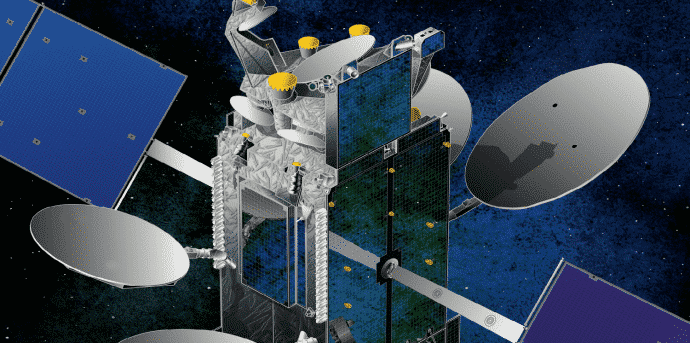NASA trying out light-based modem that will transfer data up to 100 times faster than radio signals
In a first-of-its-kind, a team at NASA is developing a new communications modem that incorporates light-based technology that could change everything from Earth-bound telecommunications, medical imaging, advanced manufacturing methods, national defense and go well beyond space communication.
The space agency’s first-ever “integrated-photonics” modem will be tested on board the International Space Station in 2020, as part of a broader NASA project called the Laser Communications Relay Demonstration (LCRD). This laser system will enable data transmissions at rates 10 to 100 times faster than today’s communications equipment that needs significantly less mass and power, which the space agency says could greatly improve today’s radio frequency (RF) communications.
It’s not the first time NASA has experimented with laser communications in place of radio signals. In 2013, a payload aboard the Lunar Atmosphere and Dust Environment Explorer (LADEE) demonstrated record-breaking download and upload speeds to and from lunar orbit at 622 megabits per second (Mbps) and 20 Mbps respectively.
However, the LCRD project is designed to be an operational system after an initial two-year demonstration period. Once the initial tests due to begin in 2019, are complete, part of that will help NASA exhibit the feasibility of its laser communications setup is the new integrated-photonics modem.
The cell phone-sized device incorporates optics-based functions, such as lasers, switches, and wires, onto a microchip—much like an integrated circuit found in all electronics hardware. This means that it will be several times smaller than the fibre-optic receivers in use in spacecraft today.
Once aboard the ISS, the so-called Integrated LCRD LEO (Low-Earth Orbit) User Modem and Amplifier (ILLUMA) will serve as a low-Earth orbit terminal for Nasa’s LCRD, demonstrating yet another capability for high-speed, laser-based communications.
ILLUMA incorporates an emerging technology integrated photonics that is expected to transform any technology that employs light. This includes everything from internet communications over fibre optic cable to spectrometers, chemical detectors and surveillance systems, to name just a few.
“Integrated photonics are like an integrated circuit, except they use light rather than electrons to perform a wide variety of optical functions,” said Don Cornwell, director of NASA’s Advanced Communication and Navigation Division. “This technology will enable all types of NASA missions, not just optical communications on LCRD.”
Recent developments in nano-structures, meta-materials, and silicon technologies have expanded the range of applications for these highly integrated optical chips. Further, like electronic circuits, they can also be mass-printed lithographically, which means that they should be inexpensive to produce. And if NASA can get them to work as hoped, the benefits could be huge, offering smaller instruments with much improved performance.
“We’ve pushed this for a long time,” said lead ILLUMA developer Mike Krainak from NASA’s Goddard Space Flight Centre. “The technology will simplify optical system design. It will reduce the size and power consumption of optical devices, and improve reliability, all while enabling new functions from a lower-cost system.”
“It is clear that our strategy to leverage integrated photonic circuitry will lead to a revolution in Earth and planetary-space communications as well as in science instruments,” said Krainak. “What we want to do is provide a faster exchange of data to the scientific community… Google, Facebook, they’re all starting to look at this technology. As integrated photonics progresses to be more cost-effective than fibre optics, it will be used. Everything is headed this way.”

